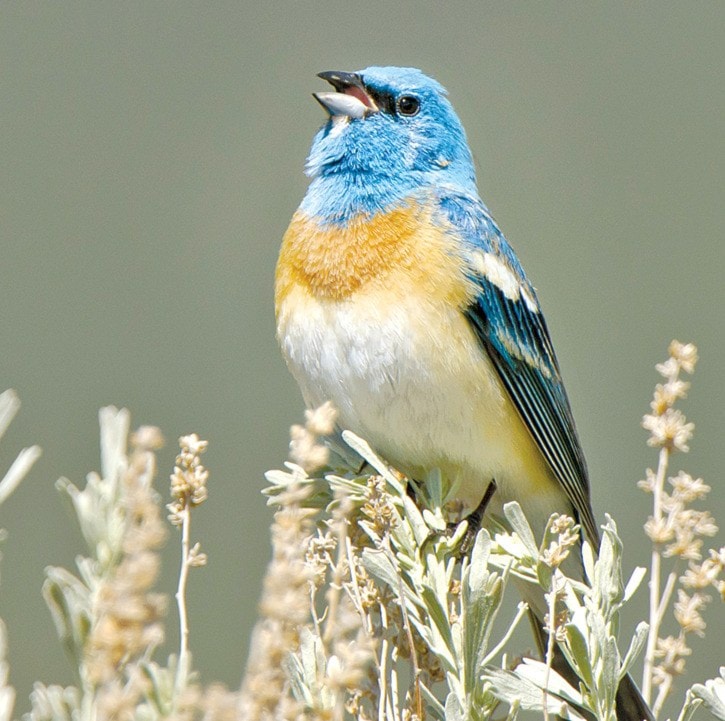Beginning this week, Peace Arch News will publish the first of two monthly environmental columns, alternating between Roy Strang (who previously contributed Enviro Notes on a weekly basis until last year) and Anne Murray, whose By the Bay column appears in the Surrey Leader and South Delta Leader newspapers.
For the second year in a row, Lazuli Buntings are singing in an overgrown prairie patch north of Boundary Bay, one of only two locations in the Lower Mainland.
This small songbird has brilliant blue plumage, recalling the semi-precious gemstone, lapis lazuli.
As it tilts back its head to sing, the turquoise blue of its head and back is accentuated by a red-orange chest and white belly.
Blue is an unusual colour in the animal kingdom, especially in the north, where muted shades of brown or grey, blending with the landscape, are far more common. Blue plumage is not a result of pigmentation but a consequence of light refraction through microscopic bubbles in the feathers’ structure.
This is the reason the Steller’s jay (the common blue jay of the west, and B.C.’s provincial bird) will often appear very dark or even black, until, in turning, its back and tail suddenly flash with rich blue tones.
Many species of birds and insects have such structural modifications that create dramatic iridescence. Butterfly wings have crystal nanostructures (think unbelievably small) that selectively scatter light, revealing breathtaking colours.
The glittering throats, or gorgets, of male hummingbirds are caused by a combination of refraction and pigmentation, as is the green plumage of many tropical birds.
Carotenoids are natural pigments that reflect specific wavelengths of light, and result in red and orange colours, like those suffusing the plumage of house finches and orioles. As male house finches mature, their red colour intensifies.
Black or brown colours in animals are due to the pigment melanin, which is also found in humans. It is synthesized within the body, unlike carotenoid which animals cannot produce. Birds with red or orange plumage must therefore obtain their pigment from consuming parts of plants, such as seeds and berries.
Even experienced naturalists can be deceived by the colour of a bird’s plumage, if viewing conditions are difficult.
The speculum on a mallard’s wing can look green or blue, depending on the angle, while even brilliant plumage can look dark when seen against the light.
Keep your eyes open for those bright plumaged songbirds, including the elusive Lazuli Bunting visiting the delta this summer.
Anne Murray is the author of two books on nature and the natural history of the Lower Mainland: A Nature Guide to Boundary Bay and Tracing Our Past ~ A Heritage Guide to Boundary Bay, both available at local bookstores; see www.natureguidesbc.com
